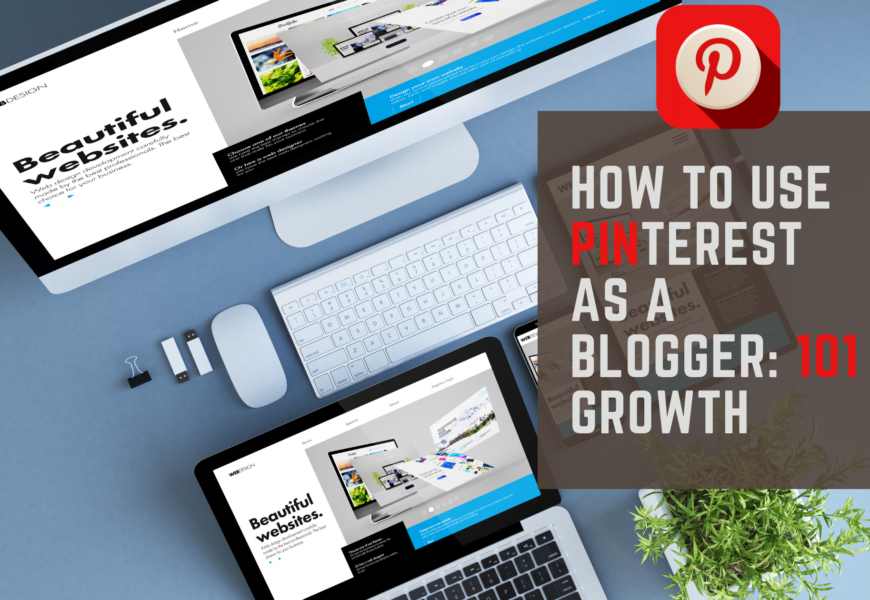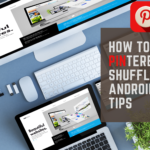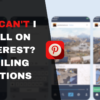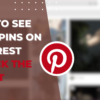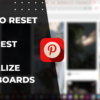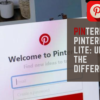Table of Contents
How to Use Pinterest as a Blogger: Step-by-Step Tutorial
In the ever-evolving world of blogging, leveraging the power of visual platforms has become a game-changer. Among these platforms, Pinterest stands out as a treasure trove of opportunities for bloggers to drive traffic and engage their audience. If you’re wondering “how to use Pinterest as a blogger,” this comprehensive guide will unveil the secrets to explosive growth. From setting up an optimized profile to implementing advanced marketing strategies, we’ll explore every facet of harnessing Pinterest’s potential to propel your blog’s success. Get ready to tap into the visual appeal and content discovery prowess of this platform and watch your traffic skyrocket.
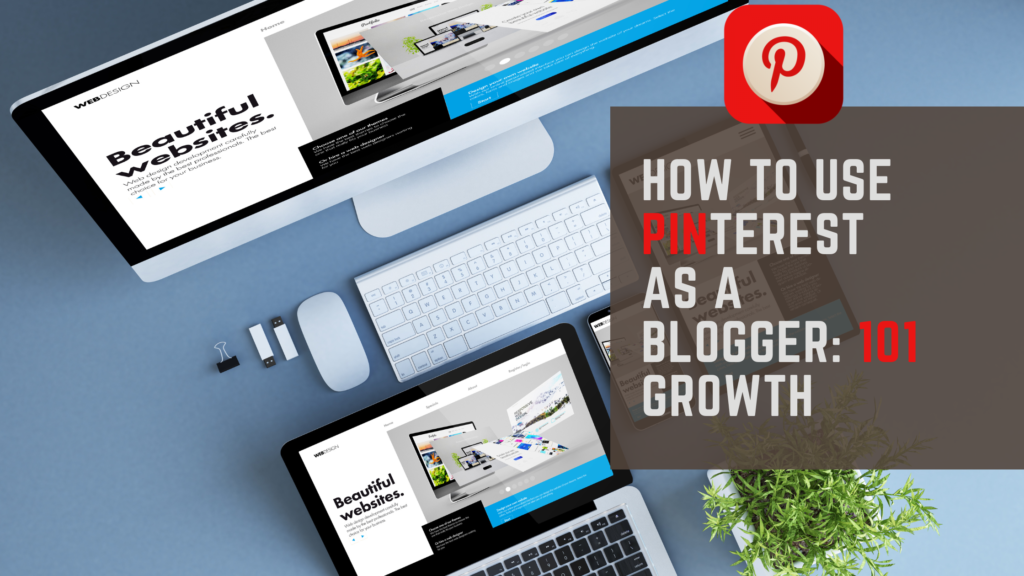
What is Pinterest and Why Should Bloggers Use It?
Pinterest is a visual search engine and social media platform. It allows users to discover, save, and share inspiring visual content. As a blogger, Pinterest provides an excellent opportunity to drive traffic. You can showcase your blog posts through eye-catching pins and images.
One of Pinterest’s biggest advantages is its high purchasing intent. According to studies, 89% of Pinterest users utilize the platform for purchase inspiration. This makes it an ideal platform for bloggers promoting products or affiliate offers. Additionally, Pinterest’s visual-centric approach helps attract interested audiences to your blog.
Introduction to Pinterest for New Bloggers
If you’re new to Pinterest, it’s a visually-driven platform for content discovery. Users create virtual boards to save and organize inspiring images (called “pins”). They can follow other users, boards, and discover new content through searches. As a blogger, you can leverage this visual aspect to attract readers.
Benefits of Using Pinterest for Blog Traffic
Pinterest offers numerous advantages for driving traffic to your blog. It’s an evergreen platform, meaning your pins stay discoverable indefinitely. Additionally, Pinterest’s smart feed algorithm prioritizes relevant, high-quality content. This gives your pins better visibility and helps attract targeted audiences.
Unlike other social media platforms, Pinterest is designed for content discovery. Users actively search for ideas, inspiration, and solutions related to their interests. By optimizing your pins and boards, you can tap into this highly engaged audience. Plus, Pinterest’s visual nature makes it perfect for promoting visually-appealing blog content.
Setting Up a Pinterest Business Account
To maximize Pinterest’s potential, set up a Pinterest Business account. This account type offers advanced features tailored for bloggers and content creators. With a Business account, you gain access to Pinterest Analytics, paid advertising tools, and richer pin formats like Article Pins. These features empower you to better understand your audience and optimize your Pinterest strategy.
Getting Started: Creating a Pinterest Profile for Your Blog

To leverage Pinterest effectively, create a dedicated profile for your blog. This profile represents your blog’s brand and helps attract relevant followers. Optimize your profile with a clear profile picture, descriptive name, and compelling bio. This initial setup lays the foundation for your Pinterest marketing efforts.
Optimizing Your Pinterest Profile for Traffic
A well-optimized Pinterest profile can significantly boost your blog’s discoverability. Start by choosing a profile name that includes your blog’s name or relevant keywords. This helps users find your profile when searching for related topics. In your bio, include a clear description of your blog’s niche and content offerings.
Additionally, ensure your profile picture is visually appealing and represents your brand. A professional headshot or recognizable logo works best for personal or business blogs. You can also include links to your blog and other social media profiles. This cross-promotion helps drive traffic across your online platforms.
Creating Effective Pinterest Boards for Your Blog
Pinterest boards are essential for organizing and showcasing your blog content. Create boards that align with your blog’s main topics and categories. For instance, if you run a lifestyle blog, create boards for fashion, home decor, recipes, and travel. Descriptive and keyword-rich board names improve discoverability within Pinterest’s search.
Additionally, consider creating a dedicated board for your blog posts. This board serves as a central hub for promoting your latest content. You can also create boards based on specific blog post categories or themes. For example, a food blogger might have separate boards for “Healthy Recipes” and “Desserts.”
Growing Your Blog with Pinterest Followers
To maximize your reach on Pinterest, grow an engaged following. Follow relevant boards and accounts within your niche to increase visibility. Consistently pin high-quality content to attract like-minded users to your profile. Engage with your followers by liking, commenting, and repinning their content. This interaction fosters a sense of community and encourages reciprocal engagement.
Driving Traffic to Your Blog with Pinterest Marketing Strategies
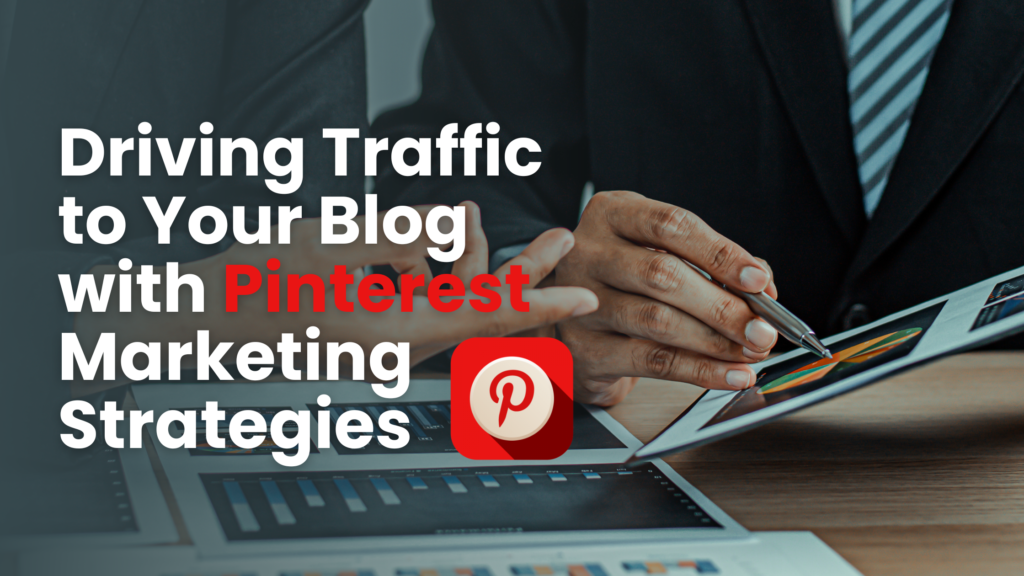
With a well-optimized Pinterest profile and a growing following, implement targeted strategies. These tactics help promote your blog content and drive more traffic. Leverage Pinterest Analytics, create visually compelling pins, and implement a cohesive marketing strategy. By doing so, you can maximize your blog’s visibility and attract your target audience.
Utilizing Pinterest Analytics to Improve Blog Traffic
Pinterest Analytics provides valuable insights into your audience and content performance. Use these analytics to understand your top-performing pins and boards. Analyze the types of content that resonate with your audience. This data helps you optimize future pins and tailor your content strategy.
Additionally, monitor key metrics like impressions, clicks, and engagement rates. These metrics indicate which pins drive the most traffic to your blog. Identify successful pin formats, descriptions, and visuals to replicate in future pins. Regular analysis and adjustment ensure your Pinterest efforts remain effective.
Promoting Your Blog with Engaging Pinterest Pins
Creating visually appealing and engaging pins is crucial for driving traffic. Utilize high-quality, vertically-oriented images that catch users’ attention as they scroll. Include clear, descriptive titles and concise descriptions that accurately represent your content. Incorporate relevant keywords to improve discoverability within Pinterest’s search.
Additionally, consider creating “rich pins” for your blog posts. Rich pins display additional metadata, such as article headlines and descriptions. This added context provides users with more information about your content upfront. Consequently, rich pins can improve click-through rates and drive more qualified traffic.
Implementing a Successful Pinterest Marketing Strategy
To maximize your blog’s success on Pinterest, develop a cohesive marketing strategy. Start by identifying your target audience and their interests on Pinterest. Determine the types of content and visuals that will resonate with them. Create a consistent content calendar for pinning new blog posts and repinning popular content.
Additionally, experiment with different pin formats, descriptions, and visuals to find the best approach. Monitor your Pinterest Analytics regularly to assess your strategy’s effectiveness. Make data-driven adjustments to optimize your efforts and drive more traffic. Consistency and adaptability are key to a successful Pinterest marketing strategy for your blog.
Advanced Tips for Maximizing Blog Traffic with Pinterest
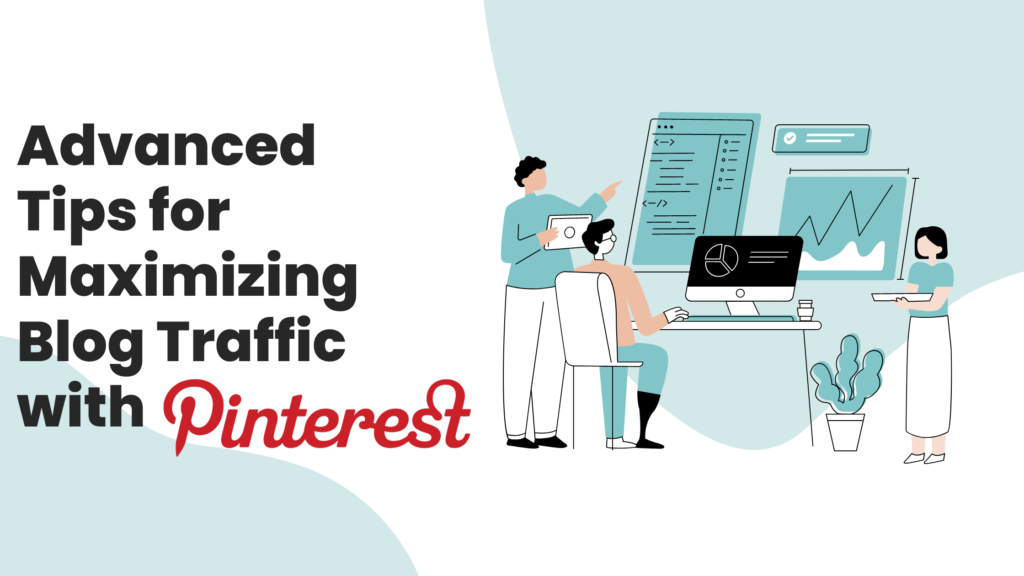
As you become more familiar with Pinterest, leverage advanced tactics. These strategies help you further optimize your presence and drive even more traffic. Implement SEO best practices, engage with your audience, and stay up-to-date with trends. By taking your Pinterest efforts to the next level, you can maximize your blog’s reach.
Using SEO on Pinterest to Drive More Traffic to Your Blog
While Pinterest is a visual platform, SEO plays a crucial role. Optimizing your pins and boards for relevant keywords improves discoverability. Conduct keyword research to identify high-volume, relevant terms in your niche. Incorporate these keywords into your pin descriptions, board names, and profile bio.
Additionally, ensure your website is optimized for Pinterest-related traffic. Install Pinterest’s official browser extension to enable “Save” buttons on your website. This encourages readers to easily pin your content directly from your blog. You can also add Pinterest’s metadata tags to your blog posts for richer pins.
Optimizing Pinterest Boards and Pins for Search Engines
While Pinterest has its own search engine, optimizing for Google can drive additional traffic. Ensure your boards and pins are public and accessible to search engines. Include descriptive, keyword-rich titles and descriptions for your boards and pins. This improves the likelihood of your content appearing in Google’s image search results.
Furthermore, consider creating dedicated blog boards or category-specific boards for better organization. These targeted boards make it easier for users to find and follow relevant content. Lastly, encourage followers to repin your content, as this can increase visibility and credibility. Consistently optimizing your Pinterest presence for search engines is key.
Engaging Pinterest Users to Bring Traffic Back to Your Blog
While attracting traffic from Pinterest is crucial, retention is equally important. Engage with your Pinterest audience to encourage them to visit your blog. Respond to comments, follow relevant accounts, and join group boards within your niche. This interaction fosters a sense of community and keeps your blog top-of-mind.
Additionally, consider hosting Pinterest-exclusive promotions, contests, or giveaways. These incentives can drive users from Pinterest back to your blog. Lastly, ensure your pins include clear calls-to-action, directing users to click through. By actively engaging your Pinterest audience, you can cultivate long-term interest and loyalty.
Conclusion
Pinterest presents an invaluable opportunity for bloggers to drive significant traffic. By leveraging its visual nature and content discovery features, you can attract your target audience. Start by optimizing your Pinterest profile, creating compelling boards, and growing an engaged following.
Implement strategic tactics like utilizing Pinterest Analytics, promoting engaging pins, and developing a cohesive marketing strategy. As you gain experience, implement advanced techniques such as SEO optimization, search engine visibility, and audience engagement. Consistently refine your approach based on data-driven insights and industry trends.
With dedication and a well-rounded Pinterest strategy, you can drive explosive growth. By tapping into Pinterest’s vast potential, you can attract a steady stream of targeted traffic. This increased visibility and engagement will ultimately lead to more success for your blog. So, embrace the power of Pinterest and watch your blog thrive.

